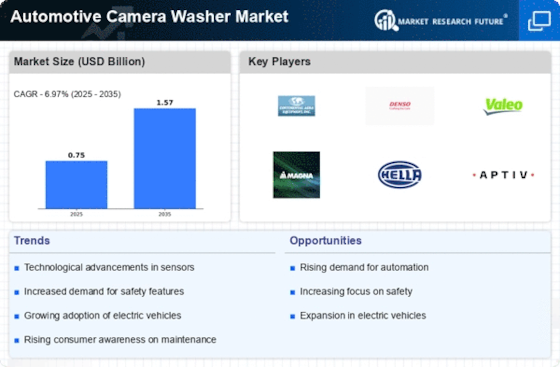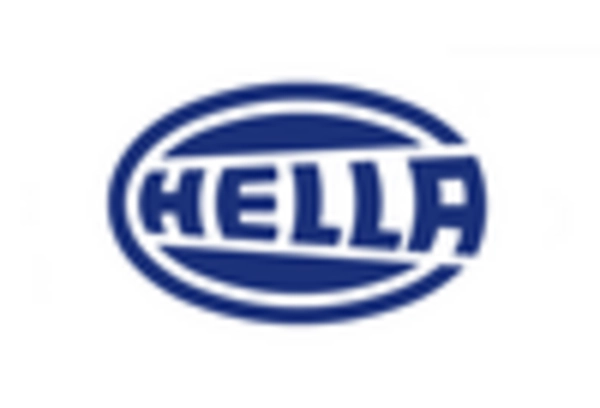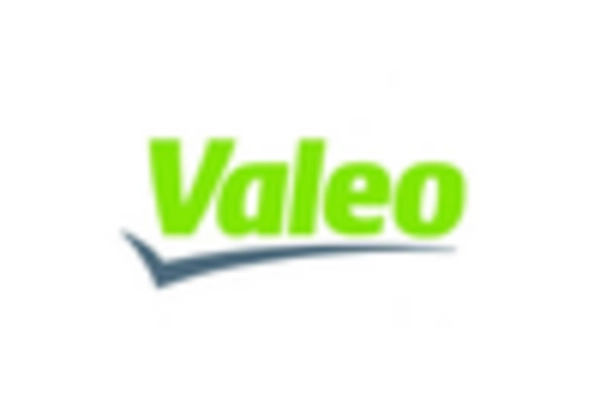Regulatory Compliance and Standards
Regulatory compliance and standards play a crucial role in shaping the Automotive Camera Washer Market. Governments and regulatory bodies are increasingly mandating safety features in vehicles, including those that enhance visibility through camera systems. Compliance with these regulations often requires the integration of effective camera washing solutions to ensure that cameras remain operational under various conditions. As manufacturers strive to meet these standards, the demand for reliable and efficient camera washers is expected to rise. This regulatory landscape not only drives innovation but also encourages investment in the Automotive Camera Washer Market, as companies seek to develop products that align with evolving safety requirements.
Growing Consumer Awareness of Vehicle Safety
Consumer awareness regarding vehicle safety is a significant driver for the Automotive Camera Washer Market. As more individuals prioritize safety features in their vehicles, the demand for technologies that enhance visibility and reduce accidents is increasing. The presence of clean and functional cameras is essential for systems such as lane departure warnings and collision avoidance. This heightened focus on safety is reflected in market trends, with a reported increase in the installation of safety features in new vehicles. Consequently, the Automotive Camera Washer Market is likely to benefit from this trend, as manufacturers seek to provide comprehensive safety solutions that include effective camera cleaning mechanisms.
Technological Advancements in Camera Systems
Technological advancements in camera systems are significantly influencing the Automotive Camera Washer Market. Innovations such as high-definition cameras and 360-degree views are becoming standard in modern vehicles. These advancements necessitate the implementation of efficient camera washing systems to maintain optimal performance. As camera technology evolves, the need for integrated cleaning solutions that can adapt to various environmental conditions becomes increasingly critical. Market analysis suggests that the introduction of smart camera systems, which can detect dirt and activate washing mechanisms autonomously, could further propel the Automotive Camera Washer Market. This trend indicates a shift towards more sophisticated and user-friendly vehicle technologies.
Rising Demand for Advanced Driver Assistance Systems
The Automotive Camera Washer Market is experiencing a notable surge in demand due to the increasing adoption of Advanced Driver Assistance Systems (ADAS). These systems, which enhance vehicle safety and driving convenience, often rely on cameras for functionality. As a result, the need for clear and unobstructed camera views has become paramount. The integration of camera washers ensures that dirt, debris, and adverse weather conditions do not impair camera performance. Market data indicates that the ADAS segment is projected to grow at a compound annual growth rate (CAGR) of approximately 10% over the next five years, further driving the need for effective camera cleaning solutions in the Automotive Camera Washer Market.
Increased Production of Electric and Autonomous Vehicles
The increased production of electric and autonomous vehicles is emerging as a significant driver for the Automotive Camera Washer Market. As automakers pivot towards electric and self-driving technologies, the integration of advanced camera systems becomes essential for navigation and safety. These vehicles often require multiple cameras for various functions, including obstacle detection and lane keeping. Consequently, the need for effective camera cleaning solutions is amplified, as any obstruction can compromise vehicle performance. Market projections indicate that the electric vehicle segment is expected to grow substantially, which will likely lead to a corresponding increase in demand for camera washers within the Automotive Camera Washer Market.

















Leave a Comment